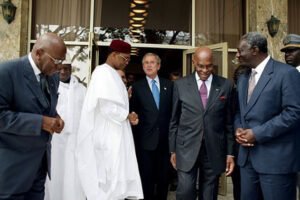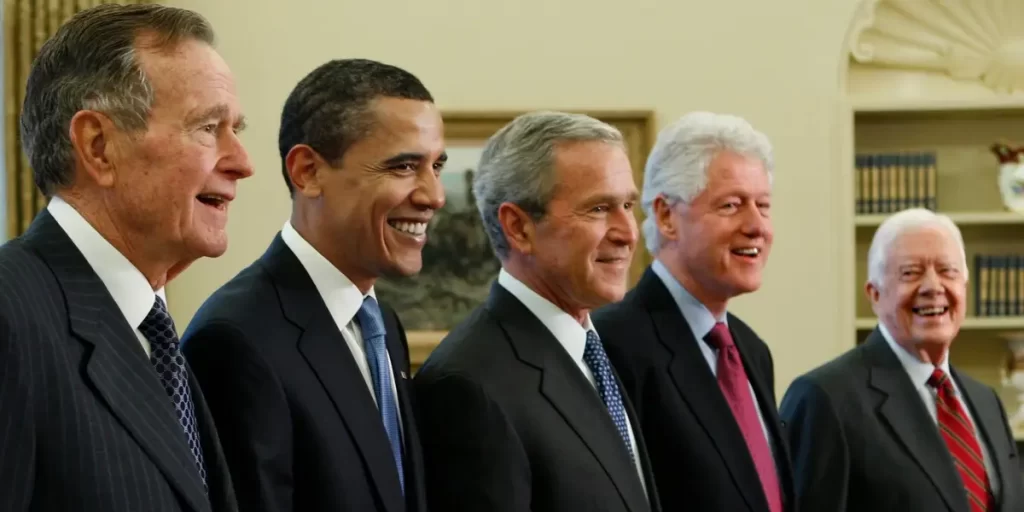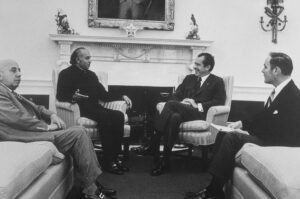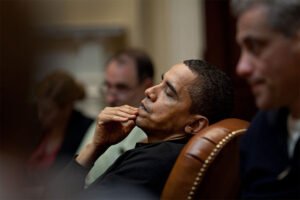Throughout American history, presidents have done both good and horrible things. They have committed blunders that have resulted in the loss of lives, and they have often gotten away with it. This is a list of some of the things presidents have done that have resulted in casualties and fatalities. We present you with 5 dangerous mistakes made by US Presidents.
5 dangerous mistakes made by US Presidents
1- Bill Clinton ‘Not Killing Bin Laden’
Former President Bill Clinton told an audience in Australia in 2001, just hours before the World Trade Centre attacks, that he had nearly killed Osama bin Laden. The recording, which neither Clinton nor the audience realized was significant at the time, is one of history’s most painfully ironic footnotes.Bin Laden was not regarded as the threat he ultimately became in 1998, but he was nonetheless on the government’s radar. He was wanted for bombing US embassies in Tanzania and Kenya, but he had never undertaken any big strikes against the US. Finally, after years of attempting to find him, he was tracked to a small town in Afghanistan called Kandahar, where he was suspected of being held in the governor’s residence.
The military intended to launch a strike against the village that would have killed bin Laden, but doing so would have endangered the lives of hundreds of civilians. President Clinton called off the strike in order to save the lives of the 300 or so local residents. It was also thought that the strike would fail because bin Laden had left the room where the missile was intended. In May 1999, a second strike was considered, but a recent blunder involving a CIA bombing of the Chinese embassy in Belgrade made the military leery of another possible blunder. Another chance would never come their way, and two years later, bin Laden committed the deadliest attack on US soil in American history. We may never know what difference it may have made had bin Laden has been killed when we had the chance.
2- Richard Nixon ‘Pakistani Genocide Of Bangladesh’
Tensions were rising between Pakistan’s military administration and India’s government in 1971. India and Pakistan have had conflicts for decades, but there appeared to be a war on the horizon due to growing tensions between the two countries. Pakistan was a close economic and political partner of the US at the time, while India was a lesser ally. Despite the country’s Muslim dictatorship, President Nixon and Secretary of State Henry Kissinger decided to offer Pakistan economic and military support in the event of a war (which occurred later that year).
However, the weapons secretly handed to the Pakistani government were utilized for a much more deadly purpose: genocide against the Bengali people. Pakistan is estimated to have murdered about 200,000 people, and according to State Department cables, neither Nixon nor Kissinger seemed to care. The slaughter had little effect on the United States continued backing. Private US investments (many of the corporations in Pakistan gave money to the Nixon campaign) appeared to be more vital than the lives of the Bengalis.
At the time, the Indian government was receiving support from the Soviet Union, and the White House Tapes revealed the feelings of the president: Nixon once said that India needed “a mass famine.” When Kenneth Keating, a Republican serving as ambassador to India, confronted Nixon about the suffering of the Bengali people, Nixon called him “a traitor.” Finally, this all came to a head when India and Pakistan went to war. The cost of Nixon’s support for Pakistan was the loss of hundreds of thousands of lives in the region, for which he showed a callousness that displayed his lack of remorse for his lethal actions.
3- Abraham Lincoln ‘Dakota War Of 1862’

Abraham Lincoln is unquestionably one of history’s most beloved presidents. His leadership of the country throughout the Civil War ranks among the greatest achievements of any American president, past or present. However, his treatment of the Sioux tribe was one of the most ignored elements of his presidency. It is undeniably one of Lincoln’s worst chapters, tainting his reputation as an American saint.
The Sioux abandoned vast swaths of their country in exchange for financial payments in 1851. The federal government owed the Sioux almost $1.4 million by 1862. Chief Little Crow tried to appear before the government, but the president refused to recognize him. Following a series of battles initiated by the Sioux, Lincoln granted General John Pope authorization to fight back. This resulted in the Dakota War of 1862, in which the Union government declared war on the Sioux, who were just fighting for the cash they had been promised.
The American administration, of course, destroyed the Sioux insurrection very immediately. While Lincoln pardoned most of the Sioux, 38 were nonetheless murdered in the largest mass execution in American history on December 26, 1862. The Dakota War faded into obscurity over time. While the Civil War and the abolition of slavery helped Lincoln rise above many other presidents, his conflict with the Sioux over their proper payment is not forgotten.
4- Barack Obama ‘ATF Gun-Walking’
While the ATF has used gun-walking with some success since 2006, it wasn’t until 2009 that President Barack Obama authorized then-Attorney General Eric Holder to use the Department of Alcohol, Tobacco, and Firearms to tag several deadly assault rifles so they could be sold by gun dealers near the border to “straw buyers” who would then sell the weapons to Mexican cartels. All of this was carried out under the code name “Operation Gunrunner.” Not only was this illegal, but when the guns did end up in the hands of the cartels, they were used to execute Mexican people before being ceremoniously dumped to leave no trace. While many of the straw buyers were caught and prosecuted, none of the cartel targets were actually caught, leaving them in the clear.
Following the failure of the operation, the order was given to bury all documents. According to a Department of Justice study, just 710 of the 2,000 weapons being tracked had been recovered by 2012. This indicates that the Mexican cartels may still have access to over 1,000 assault rifles. The operation might have remained hidden if it hadn’t been for the murder of US border patrol agent Brian Terry in 2010 by a Mexican cartel. Following his death, investigations revealed that the tagged firearms were linked to 150 killings in Mexico.
Members of Congress began investigating the operation in 2011, wondering who gave the order for it. The order was denied by former Attorney General Holder. He was found in contempt of court after refusing to turn over any relevant documents to Congress. When challenged about his role in the operation, President Obama cited executive privilege for the first time in his presidency. While the investigation was never technically concluded, it eventually came to a halt, and there has been no further information on who was to blame.
5- George W. Bush ‘Niger Uranium Forgeries’

The Italian military allegedly furnished the CIA with proof in 2001 that Saddam Hussein attempted to purchase yellowcake uranium from the government of Niger. This occurred in the aftermath of the World Trade Centre attacks when the UN was gathering information to determine whether Hussein was seeking to build and store weapons of mass destruction. Yellowcake uranium is one of the primary materials in the production of nuclear bombs, which the Iraqi government, according to the US, had been undertaking, and the documents looked to substantiate this charge.
However, for their entire existence, the documents were suspected of being forgeries. Despite the questions of their authenticity, the Bush administration used them in the case of war with Iraq with the infamous words, “The British government has learned that Saddam Hussein recently sought significant quantities of uranium from Africa.” Even before President Bush gave the speech in which he put forward the evidence that Iraq had been attempting to get uranium, French intelligence had said that the documents were not hard evidence. Despite this, the American coalition went to war with Iraq.
The debate over the documents and the justification for war would not go away. American generals and CIA agents attempted to verify the documents in 2002, but their efforts were futile. In 2004, an Italian source claimed to have assisted in the forging of the documents, and both British and French forces discovered that they had been faked. In 2003, it was revealed that an examination by the Atomic Energy Agency had also discovered that the documents were fabricated. None of these discoveries had any impact on the battle. Many lives were sacrificed, yet no one was prosecuted, despite the fact that the primary foundation of the Iraq War was wholly fabricated.



